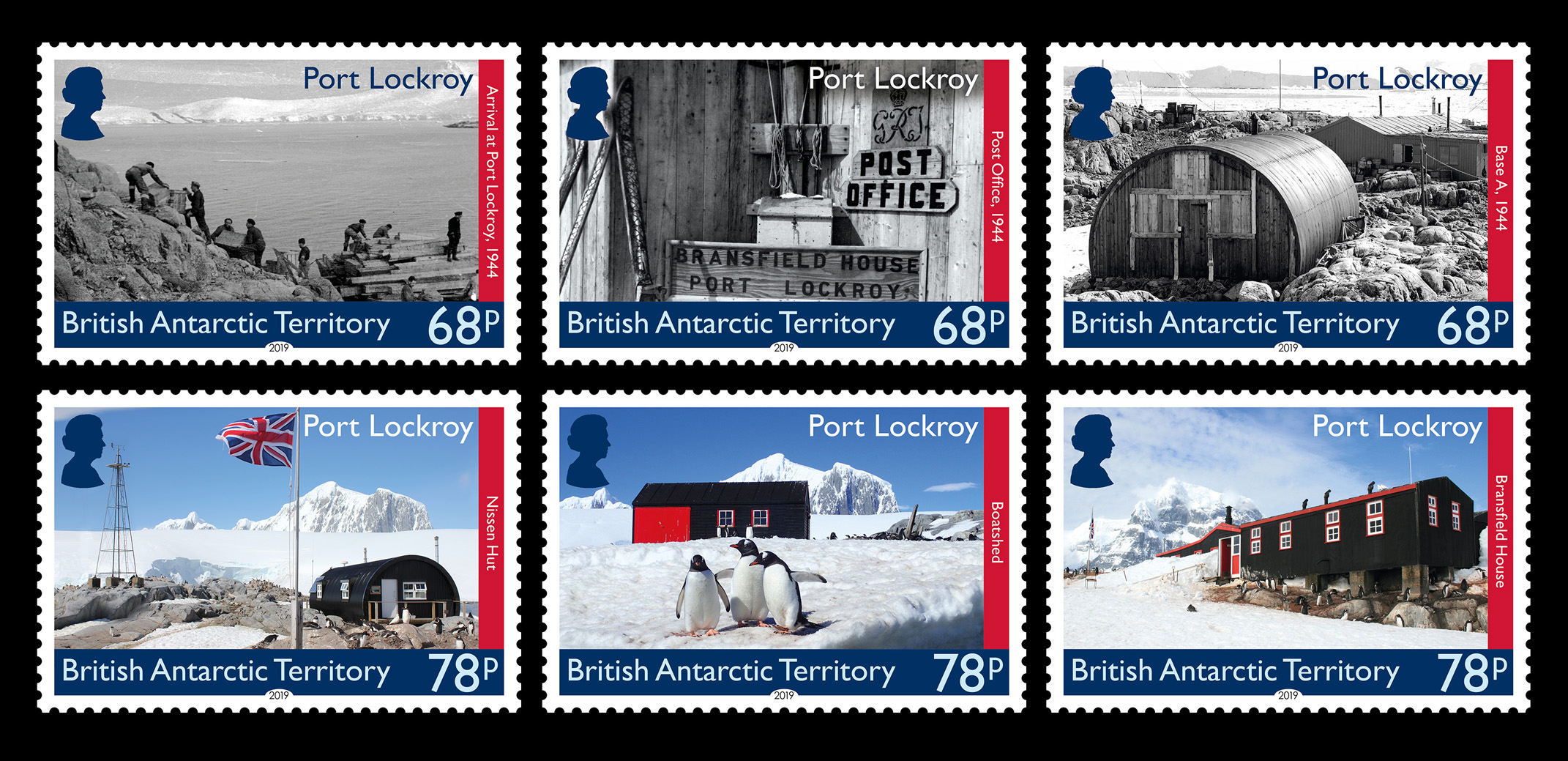
Marking 75 years since the secret wartime mission Operation Tabarin. The British Antarctic Territory are delighted to present this stamp set showing the changing face of one of the best-known sites in Antarctica and origin of the British Antarctic Survey – Port Lockroy.
Find out where to buy
Port Lockroy is a Historic Site and Monument operated by the UK Antarctic Heritage Trust (UKAHT). Opening each Antarctic summer, Port Lockroy houses a small UKAHT team each season who welcome visitors to Base A, which is now a living museum and the world’s most southerly public Post Office.
Originally established in February 1944, and marking its 75th anniversary in 2019, the roots of this British station go back to a more troubled time.
Operation Tabarin
Operation Tabarin was a secret operation to conduct science and establish a UK presence in Antarctica in 1944, during the Second World War. The 14-man expedition, headed by The Admiralty, was led by Lieutenant James Marr. The objectives of the expedition included collecting scientific data, monitoring any enemy activity in the region, and protecting British territorial claims.
The challenges of the Operation were huge. Marr experienced difficulties from the outset, from recruiting suitable expedition members and sourcing suitable transport, to the process of constructing bases in extreme conditions and maintaining supplies.
In the expedition’s first two years, bases were initially established on Deception Island, a volcanic natural harbour in the South Shetland Islands, and at Port Lockroy, a sheltered harbour off the Coast of Wiencke Island, previously only used by whalers. A base was established later in Hope Bay, sharing the site with a stone hut built in 1903 by a stranded Swedish expedition.
Over the course of two years, geological, glaciological, meteorological, zoological and botanical experiments were conducted, gathering tonnes of unique specimens using dog sleds in small teams. Exploration and cartography also continued with expedition members covering new ground, building on the work by the few expeditions that had previously visited the area.
British Antarctic Survey
After the Second World War and two long, dark winters, Operation Tabarin’s men, three bases and its scientific work were transferred to a new organisation – the Falklands Islands Dependencies Survey, which in turn became the British Antarctic Survey (BAS) in 1962, who are still pioneering polar science today. That same year Port Lockroy was closed when technology advanced and research began to move to larger and more modern bases being built on the Antarctic Peninsula and the continent beyond.
Port Lockroy
In 1996, BAS, UKAHT and the UK’s Foreign and Commonwealth Office commenced work to restore the base to its 1950 condition as a living museum and began preserving the artefacts left behind. It had been recognised for its historical importance two years earlier, receiving Historic Sites and Monuments (HSM) status. Since 2006, UKAHT has taken on the responsibility of managing the site and visitors, with proceeds from the gift shop and post office helping to continue the preservation of Port Lockroy and five other HSM sites in the BAT.
Today, the original Bransfield House is still standing, constructed in 1944 and extended in the 1950. The whole building is operated as a museum and visitors are encouraged to explore the living conditions endured by early scientists. The Post Office itself has been in operation from the beginning, providing a vital link to home in the past, and now allowing people to send postcards from Antarctica all over the world.
6 values – 3 x 68p values & 3 x 78p values
Technical details
| Photography | 68p images I.M. Lamb, 1944. Courtesy of the British Antarctic Survey Archives Service. 78p images Courtesy of UKAHT |
| Designer | Bee Design |
| Printer | Cartor Security Printing |
| Process | Stochastic lithography |
| Perforation | 13 ¼ x 13 ½ per 2 cms |
| Stamp size | 42 x 28mm |
| Sheet layout | 10 |
| Release date | 18 November 2019 |
| Production Co-ordinator | Creative Direction (Worldwide) Ltd |
